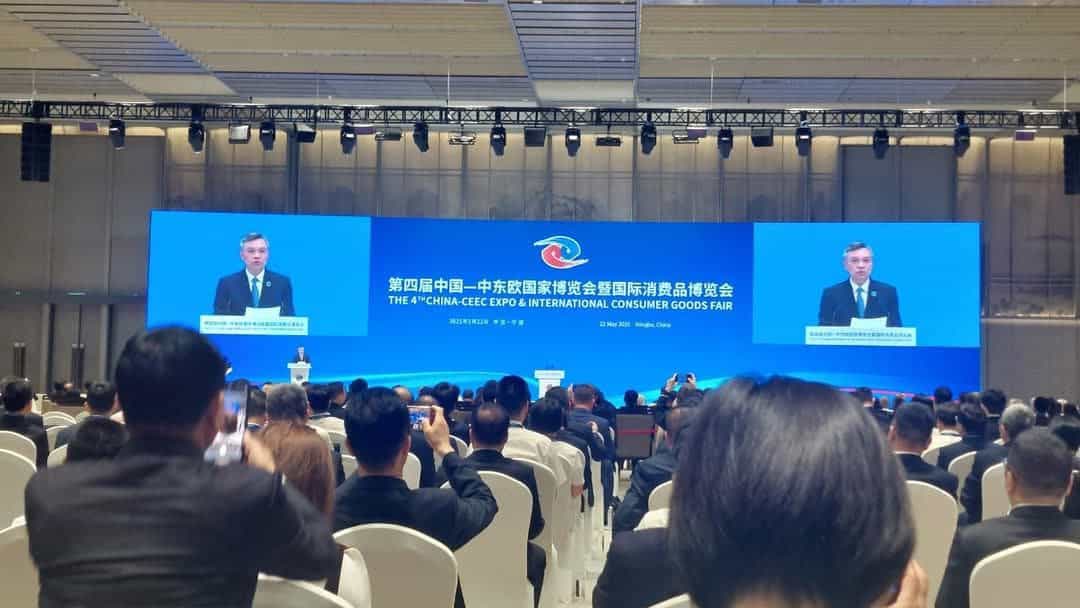The strategic importance of China's links with the world, especially with Central and Eastern Europe, was demonstrated by two major international events. As part of the most successful international project of the New Silk Road, the 9th edition of the Silk Road International Expo took place in Xi'an with the ambition to deepen trade, infrastructure and cultural ties between China, Europe, Asia and Africa. At virtually the same time, the 4th China-CEEC Expo, a trade fair and cooperation forum between China and 17 Central and Eastern European countries, was held in Ningbo.
Although the name of both Expo events may suggest that it is primarily a showcase of investment offers and cultural performances, the main mission of both events is to strengthen diplomatic relations and determine the future direction of cooperation and China's overall foreign policy.
For Europe, the most important event is the China-Central and Eastern Europe Expo (CEEC Expo), which took place from 22 to 25 May 2025 in Ningbo. The fourth edition of the CEEC Expo, was held not only in the city centre, where a similar expo has been held since 2012, but as the fourth in a row, the bulk of the event took place in newly built modern exhibition and conference palaces built just for the occasion. This year, it welcomed more than 435 exhibitors from 14 Central and Eastern European countries who presented over 8,000 products on an area of 20,000 m². The event attracted more than 15,000 trade visitors, including more than 3,000 international buyers from 72 countries and regions.
This year the guest countries were Slovakia and Slovenia. While Slovenia bet on the image of a culturally sophisticated and attractive tourist destination, Slovakia presented itself at the Expo, among other things, with a strong political presence - also thanks to the fresh bilateral dialogue between Prime Minister Robert Fico and Chinese President Xi Jinping in Moscow. In his speech, Slovak Deputy Prime Minister Richard Raši described relations with China as "strategic" and stressed the readiness to deepen cooperation not only economically, but also culturally and scientifically.
Slovakia was represented by more than 40 companies, which presented products in the field of food and beverages, as well as renewable energy, aviation technology and academic cooperation. And as you could feel from the atmosphere of the fair, Slovakia has a good reputation in China and is actively working to build open cooperation. Speaking at the opening of the Slovak pavilion, the chairman of the Slovak National Council, Richard Raši, stressed that Slovakia and China are "friends without open political issues" and that their relationship is based on trust and fair business partnership.
Unfortunately, the Czech Republic had only minimal representation at the expo. Compared to 2019, when it was the host country and sent a strong delegation including companies from various sectors, this year only traditional brands with a long-term presence on the Chinese market were presented - Czech glass, Litovel beer, Marlenka confectionery.
Silk Road Expo in Xi'an
At virtually the same time, but more than a thousand kilometres west of coastal Ningbo, a similarly large-scale event - the 9th annual Silk Road International Expo - was taking place in the historic city of Xi'an, the former start of the Silk Road. More than 70 countries and regions, including representatives of the United Nations and various international organisations, were represented. The main themes were infrastructure, international trade, green energy, agricultural cooperation and digital transformation.
The Expo in Xi'an is more than just a regional exhibition - it is the showcase for China's Belt and Road Initiative, which aims to create a global network of trade and strategic partnerships across continents. This year, the key message was to strengthen cooperation between China and countries in Central Asia, the Middle East and Africa. The participation of Azerbaijan, Kazakhstan, for example, was prominent, as well as Hungary, which was the guest of honour. All these countries promoted their logistics hubs and industrial zones linked to Chinese investment and had the opportunity to deepen not only trade but also diplomatic ties.
Among European countries, Hungary was the most active - the country that benefits most from Chinese investments within the European area, including the construction of the CATL factory and logistics projects within the New Silk Road.
Between opportunity and disinterest
Both major international exhibitions - the CEEC Expo in Ningbo and the Silk Road International Expo in Xi'an - show that China continues to systematically build its ties towards Europe, especially at the level of regional partnerships and concrete trade and infrastructure projects. While some Central and Eastern European countries, such as Hungary and Slovakia, see the Chinese initiative as an opportunity for growth, visibility and economic benefits, the Czech Republic has been absent from these events.
Although according to the programme a memorandum on cultural cooperation between Ningbo and Ústí nad Labem was to be signed, the Czech presence remained at a symbolic level. From an economic point of view, however, China remains a key player for the Czech Republic and the EU as a whole - especially as a supplier of strategic raw materials, technologies and intermediate products. Trade exchange is taking place regardless of diplomatic nuances. Thus, similar events are not only showcases of trade and cooperation, but also strategic meetings at diplomatic level, which create important links in a rapidly changing global world.
(tap)



